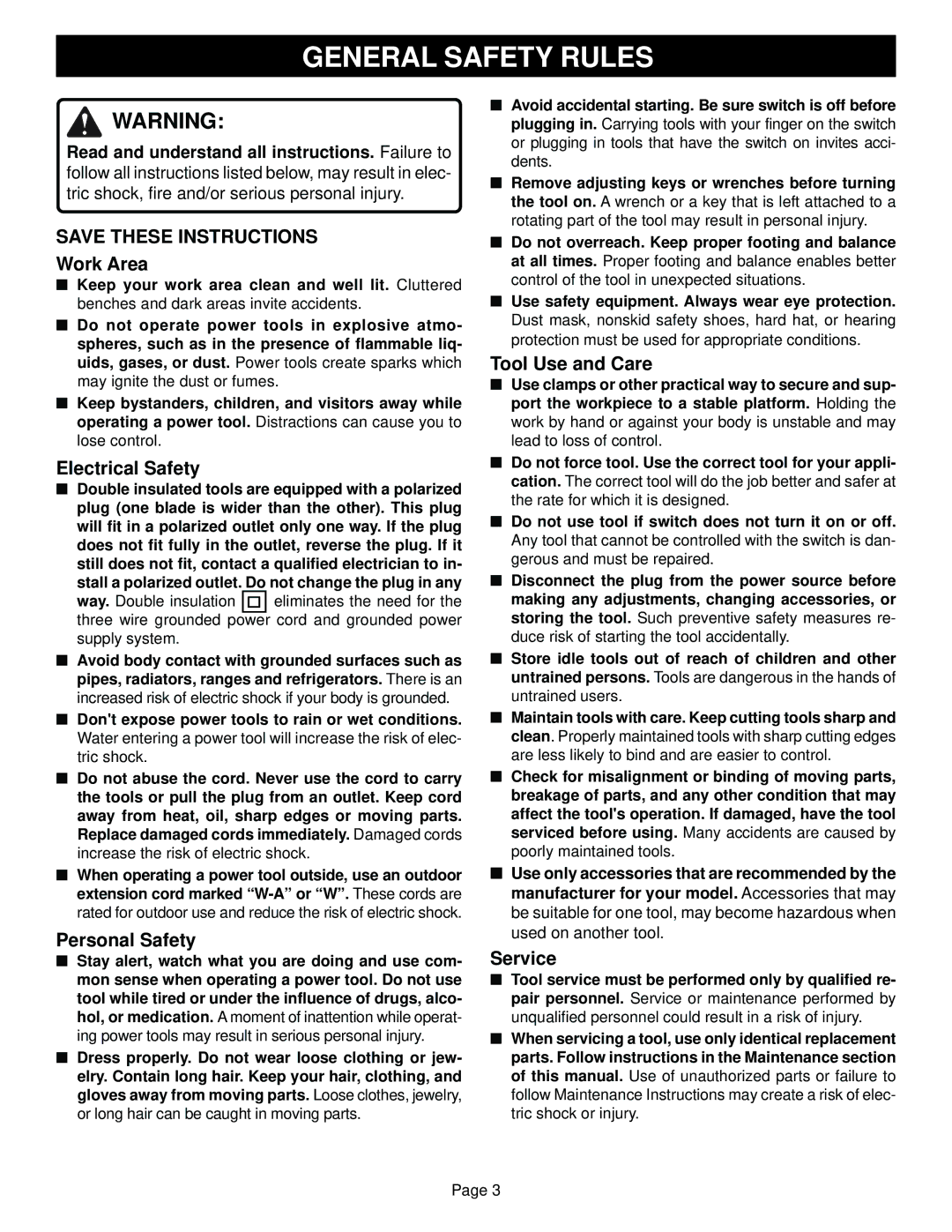TR31-1 specifications
The Ryobi TR31-1 is a versatile triangular sander designed for both professionals and DIY enthusiasts. Renowned for its compact design and powerful performance, this sander is an essential tool for achieving smooth finishes on various surfaces.One of the standout features of the Ryobi TR31-1 is its triangular sanding head. This design enables users to easily access tight corners and intricate details, making it ideal for furniture restoration, woodworking, and home improvement projects. The 3-speed settings allow users to customize their sanding experience, providing flexibility for different applications. Whether working on rough surfaces or achieving a fine finish, the adjustable speeds cater to multiple sanding needs.
Equipped with a robust motor, the Ryobi TR31-1 delivers consistent performance, ensuring efficient material removal. The sander operates effectively on a variety of materials, including wood, plastic, and even metal surfaces. This versatility makes it suitable for a wide range of tasks, from smoothing surfaces to removing paint.
Another important characteristic of the TR31-1 is its ergonomic design. The sander features a lightweight structure and an easily maneuverable handle, reducing user fatigue during extended use. Its anti-vibration technology further enhances comfort, allowing users to work steadily and accurately without straining their hands.
The dust collection system is also a notable aspect of the Ryobi TR31-1. It incorporates a built-in dust bag that efficiently collects debris during operation, keeping workspaces cleaner and safer. For users looking to optimize their dust management, the sander is compatible with standard vacuum hoses, offering seamless integration with existing dust extraction systems.
Durability is another key characteristic of the Ryobi TR31-1. Constructed from quality materials, it is built to withstand regular use, making it a reliable choice for long-term projects. The sander is also equipped with easy-to-replace sanding pads, ensuring that users can quickly switch between grits for varying sanding tasks.
In summary, the Ryobi TR31-1 triangular sander combines power, versatility, and comfort. With its unique triangular shape, adjustable speed settings, effective dust collection, and durable build, it stands out as a must-have tool for achieving high-quality finishes in any woodworking or renovation project. Whether you're a hobbyist or a professional, the TR31-1 is designed to meet your sanding needs effectively.

